Facts About the Life of American Legend, Wyatt Earp
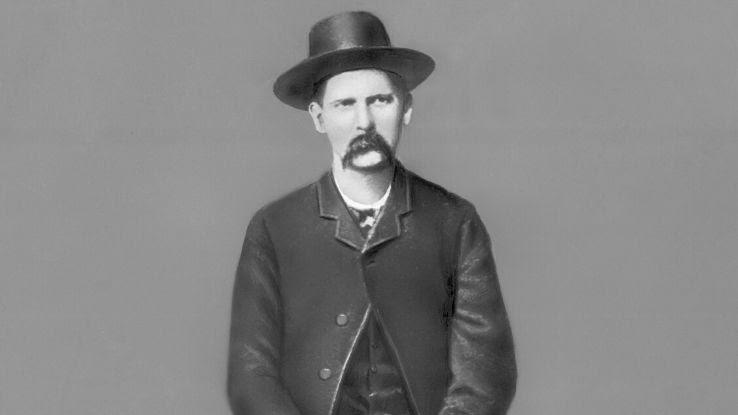
Wyatt Earp became a living legend over the course of a lengthy and eventful life. He worked several interesting jobs, including as a gambler, a lawman, a gold and silver miner and a boxing referee. Later in his life, he even became a consultant to Hollywood directors for Western films.
Stories involving Earp, especially the ones he repeated himself, are often said to be exaggerated. Here are the facts about Wyatt Earp, an American legend.
Growing Up in Illinois
Wyatt Earp wasn’t old enough to participate when the American Civil War broke out. This didn’t stop him from trying, however. At 13, he made several attempts to lie about his age to recruiters after having run away from home. His father was responsible for stopping these attempts.
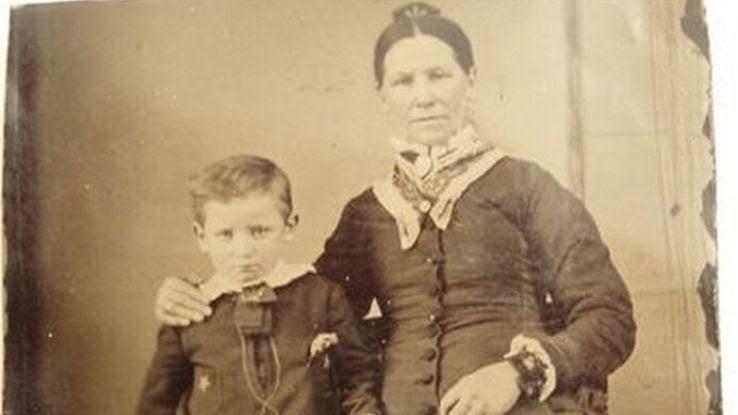
Nicholas Earp, his father, had fought in the Mexican-American War and trained troops for the Union war effort. In 1864, Nicholas Earp organized wagons to head to San Bernardino, California. Wyatt Earp arrived in California in mid-December that year and sought work based on his wagon-driving experience.
Transcontinental Railroad Supplies
As the Union Pacific Railroad progressed west, Earp began freighting supplies to the railhead. He’d become known as an experienced freighter by 1868, after having arrived in the area years earlier. Earp had also gained a reputation as a card gambler and picked up work refereeing boxing matches. He was thought to be a strict but ultimately fair official of the sport.
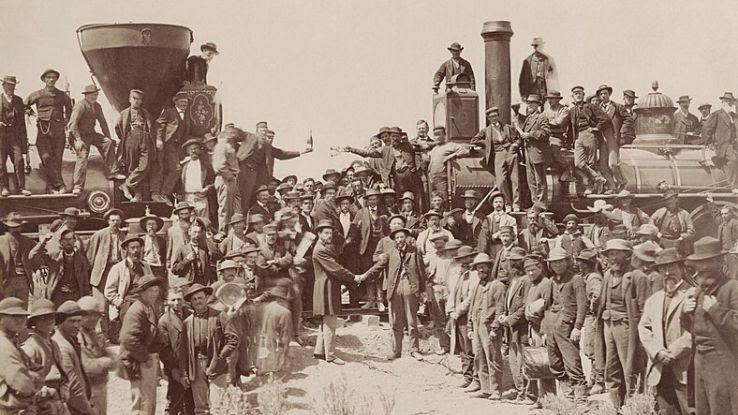
In 1869, Earp served as a referee for a boxing match featuring “Professor” Mike Johnson that drew 3,000 fans. Years later, Johnson taught President Theodore Roosevelt self-defense at the New York Athletic Club.
Town Constable in Lamar, Missouri
The Earps moved to Lamar, Missouri, in 1869. Wyatt Earp assumed the role of town constable, which had previously been his father’s role. He married for the first time in 1870 but quickly lost his wife to typhoid fever. After her death, Earp’s life and finances spiraled.
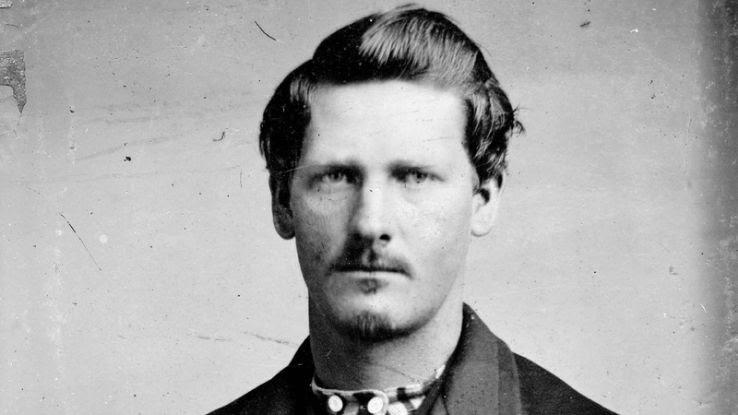
Earp was accused of embezzling funds and filing dishonest and fraudulent tax-collection claims. He was also charged with stealing horses in 1871. Earp was jailed on the charges but escaped. In order to flee the charges from Missouri, he made his way to Peoria, Illinois.
Running a Brothel in Peoria
After fleeing to Peoria, Illinois, it wasn’t long until Earp again came into trouble with the law. In 1872, Earp was arrested along with his brother, Morgan Earp, and charged with running a brothel. The brothers were fined and released. Later that year, Earp was again arrested for running a brothel, this one aboard a steamship.
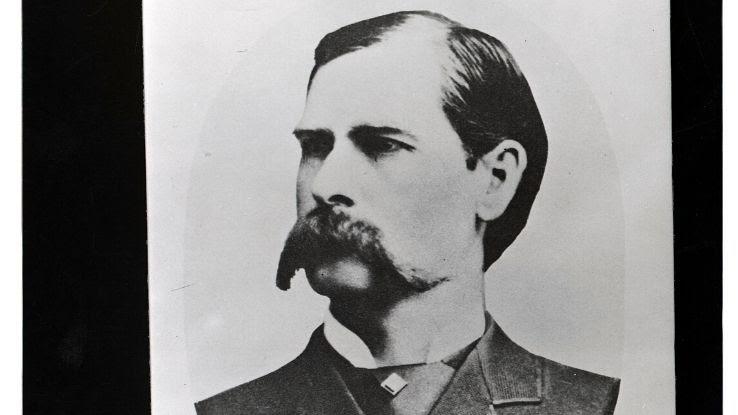
With charges mounting in Peoria, Earp left and would later claim to have spent 1873 and much of 1874 on a buffalo hunt. The Earps later arrived in Wichita in 1874.
A Bouncer and Police Officer in Wichita
When Earp arrived in Wichita, he began working as a bouncer in his brother’s brothel and later became a town deputy. Earp only ended up firing his weapon on one occasion during his time in Wichita, and that was after his gun accidentally discharged after falling from his holster. This isn’t to say he didn’t run into trouble while in town, however.
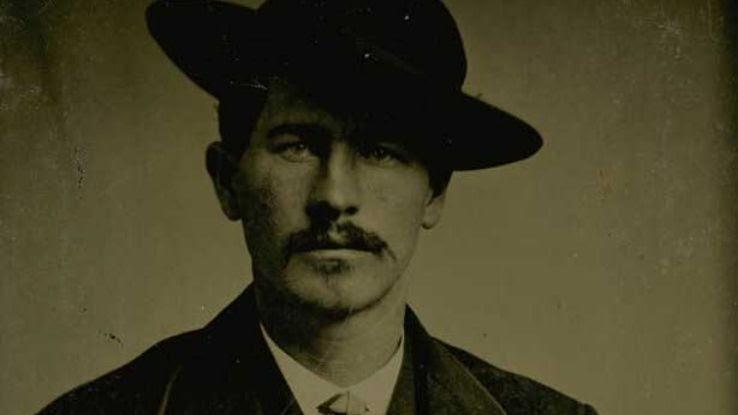
Earp beat up a former deputy after the deputy accused Earp of using his power to gain employment for his brothers. After this, Earp decided to leave the town in favor of Dodge City.
Doc Holliday in Dodge City
Earp set out for Dodge City, Kansas, where his brother was running another brothel. He joined the Dodge City town marshal’s office as a deputy. In the summer of 1878, the famed Doc Holliday saved Earp’s life.
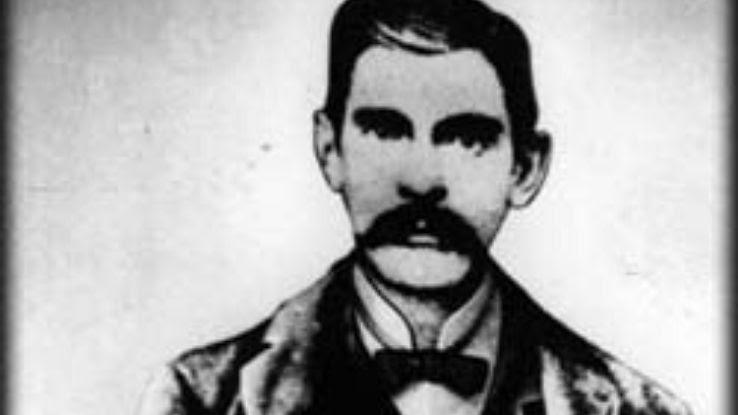
Earp arrived at a saloon to arrest several men. When he entered the saloon, however, Earp faced numerous drawn guns pointed in his direction. Doc Holliday, who had arrived in town to chase after cowboys, pointed a gun at one cowboy’s head in order to get the others to lower the guns that they’d pointed at Earp.
Getting Out of Dodge City
Dodge City was experiencing a period of growth when Earp arrived; this was mainly due to the frequent cattle drives that also brought a stream of drunken, rowdy cowboys to the town. While in Dodge City, Earp befriended journalist Bat Masterson, who, like Earp, was a big fan of the Marquess of Queensberry rules in boxing.
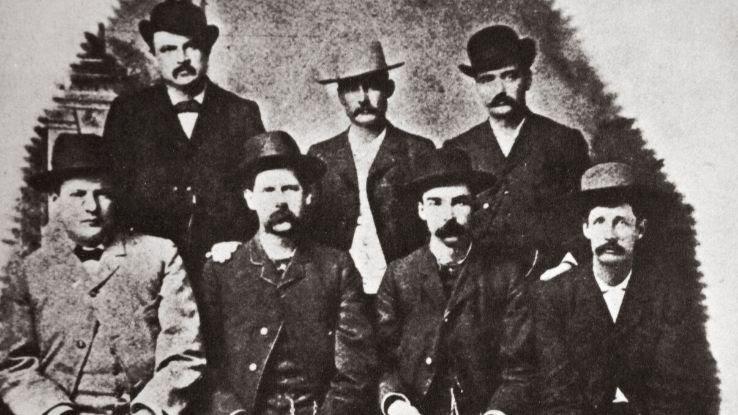
By 1879, civilization had gotten ahold of Dodge City, however, and laws were established to limit the carrying of firearms. Earp decided it was time to move on yet again, this time to Tombstone, Arizona.
Arriving in Tombstone
The population of Tombstone, Arizona, doubled from April to December of 1879. Earp intended to take advantage of this fact. He sought to create a stageline that could connect the town to the outside world but found that other companies already had that market covered. Instead, he began to gamble and also picked up work on Wells Fargo stagecoaches riding shotgun.
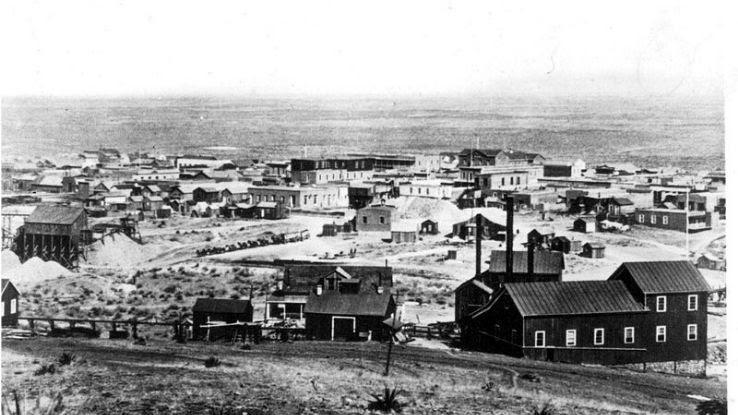
Earp and his brothers invested in several unsuccessful business ventures during this time. He was joined by Doc Holliday in 1880, who brought with him about $40,000 in gambling winnings.
The Building Feud With the Cowboys
In Tombstone, there was a group of men who operated outside the law referred to as “the cowboys.” Cowboys often partook in legitimate cattle rides or ranching businesses, but this group did so with contempt toward the law. The Army hired Earp’s brother to track down a group of these cowboys who had stolen mules.
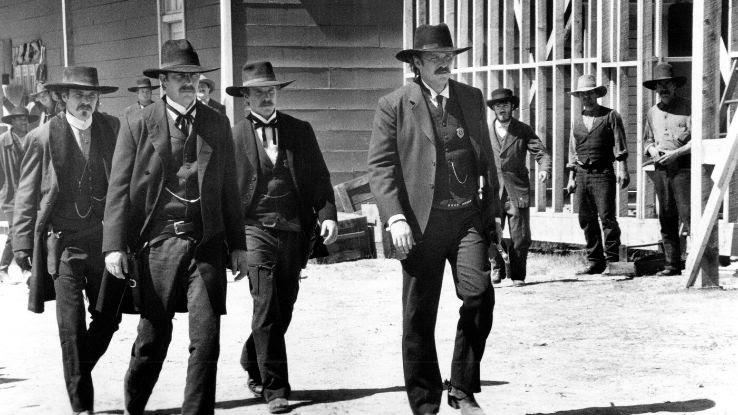
The cowboys refused to return the mules, and their leader, Frank McLaury, threatened the Earps in the newspaper, saying they’d kill the brothers if the Earps followed the cowboys with the intent to arrest them.
The Death of Fred White
In 1880, Tombstone town deputy marshal Fred White attempted to accost a group of cowboys. Cowboy Curly Bill Brocius drew his revolver and shot White in the groin. Earp was in a nearby saloon, heard the noise and proceeded to pistol-whip Curly Bill in the street. Curly Bill stood trial after White died from his injuries.
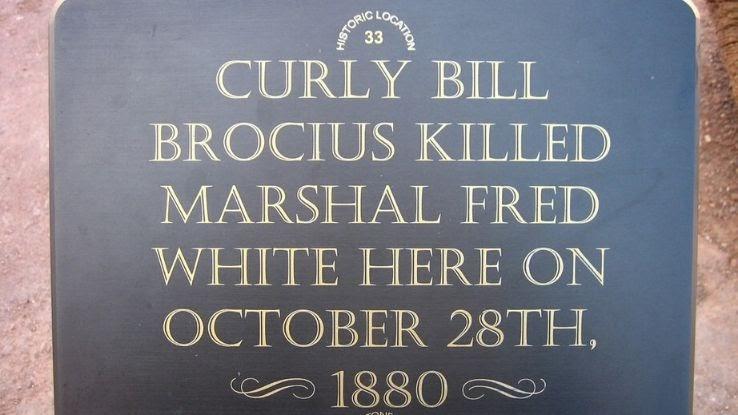
Earp testified that Curly Bill’s gun was lying in the street when he arrived. The court then ruled Curly Bill’s gun fired accidentally after being dropped, but Curly Bill still held a grudge against Earp for pistol-whipping him.
No Longer a Deputy Sheriff
The month after the incident with Fred White and the cowboys, Earp’s boss lost his re-election bid. As a result, Earp also lost his job as a deputy and tax collector. There’s been some speculation since that the cowboys may have played a role in Earp’s boss losing the election.
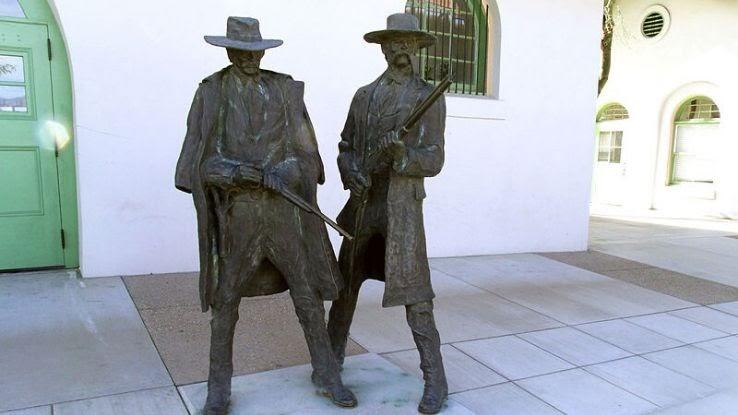
Earp was replaced as the deputy sheriff by a man named Johnny Behan. Behan was seen as something of a compatriot of members of the cowboys, including Curly Bill Brocius, who was involved in the incident with Earp and Fred White.
Relationship with Mattie Blaylock
Mattie Blaylock accompanied Earp in Tombstone, and many people considered her Wyatt’s wife. Blaylock suffered from headaches, which she took over-the-counter medication to combat. She often took a drug called laudanum, which was an opiate-based medication that also contained alcohol. This left Mattie indisposed a large portion of the time.
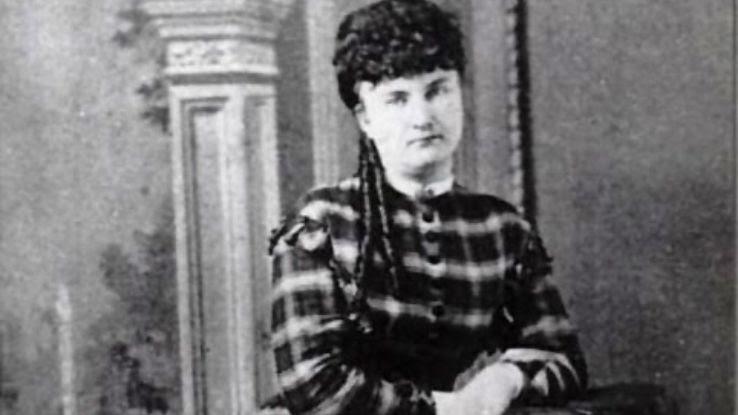
With his wife so often medicated, Earp began an affair with Sadie Marcus, who was believed to have been a prostitute that Johnny Behan employed. The relationship between Earp and Marcus only exacerbated the rivalry between Earp and Behan.
Gambling and Mining Money
Earp made money from running prostitutes and from gambling. After being ousted from his positions in Tombstone, he’s believed to have moved even deeper into these fields. Earp wrote to his friend Bat Masterson, inviting him to come and work with Earp running table gambling games.
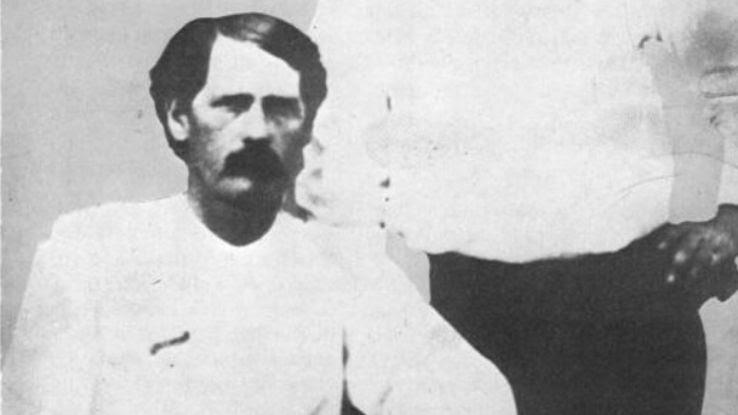
Masterson joined Earp in Tombstone in the spring of 1881 before he ultimately decided to return to Dodge City. There’s no evidence that Earp’s gambling operations during this time were unfair or that he benefited from cheating.
Facing Down a Lynch Mob
A popular tale told of Earp involves him facing down an entire lynch mob single-handedly. The tale goes that two miners had gotten into a fight, and as a result, one of the miners was killed. A lynch mob then formed with the goal of getting revenge on the surviving miner.
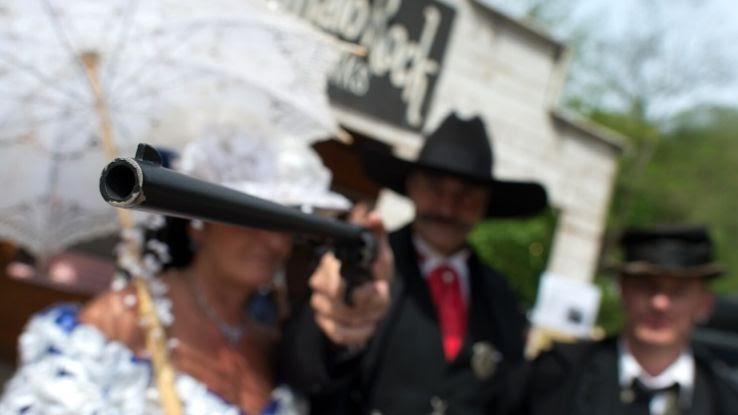
One version of the story holds that Earp faced down the entire mob and ordered their dispersal. Another version that appeared in the Tombstone Epitaph states that while Earp was present, he was also joined by Johnny Behan, Ben Sippy and his brother Virgil while facing the mob.
The Cowboy vs. Earp Feud Heats Up
The Earp and cowboy rivalry intensified in the spring of 1881. A stagecoach robbery had resulted in two dead employees, so the Earps decided to act. They organized a posse to catch the robbers. One robber was caught and turned over to Behan, but he promptly escaped prison.
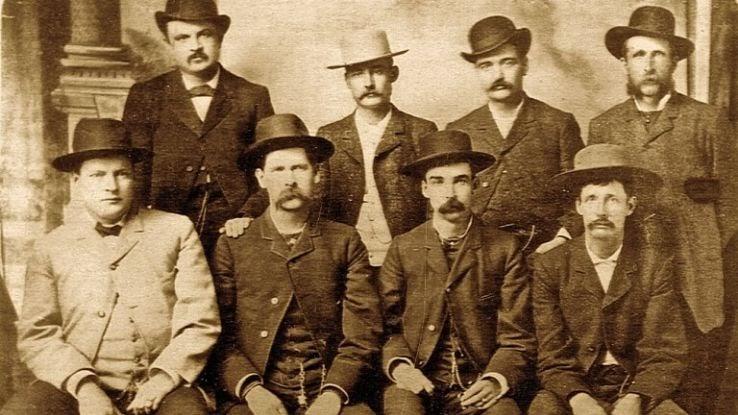
It was later said that the Earps preferred to not capture anyone alive but rather bring them in dead for the reward money. There was another stagecoach robbery that September, and the rivalry between the cowboys and Earps grew even more heated.
The O.K. Corral
Wyatt Earp, his brothers Morgan and Virgil and Doc Holliday intended to confront the cowboys at the O.K. Corral on October 26, 1881. The famous armed conflict lasted all of 30 seconds but involved about 30 rounds getting fired. The two sides stood just a few feet apart from one another at the time.
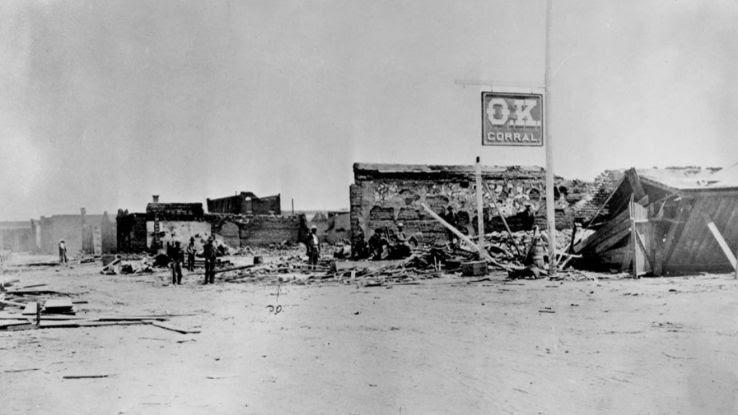
Wyatt was the only Earp brother who wasn’t wounded in the exchange. The McLaurys and Billy Clanton from the cowboy side were killed. Billy Claiborne and Ike Clanton ran away to save their own lives. History may never know who fired the first shot.
Myths and Realities of the O.K. Corral
Three men died and four were left wounded at the O.K. Corral. Nine men exchanged gunfire over 30 seconds in what later became a legendary gunfight. Stories about what happened at the O.K. Corral dominated newspaper headlines, but fact and fiction blurred.
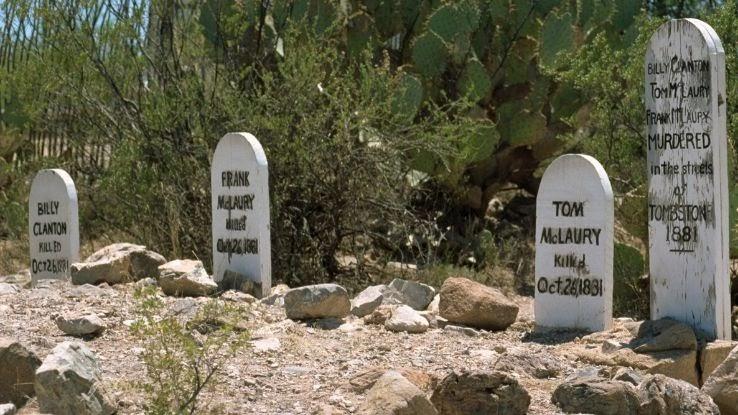
While Earp was portrayed in stories about the gunfight as having been the stone-cold gunman, evidence suggests nobody died at his hands during the fight. Two of the dead were attributed to Doc Holliday during the coroner’s investigation. Earp’s role in the gunfight may have been overstated.
Myth of the Buntline Special
Earp is often associated with the Colt Buntline Special gun. The long-barreled weapon wasn’t present at the O.K. Corral, however. This runs contrary to popular belief about what happened during the gunfight. Earp is thought to have carried a Smith and Wesson .44 at the O.K. Corral. This was his usual choice of weapon at the time.
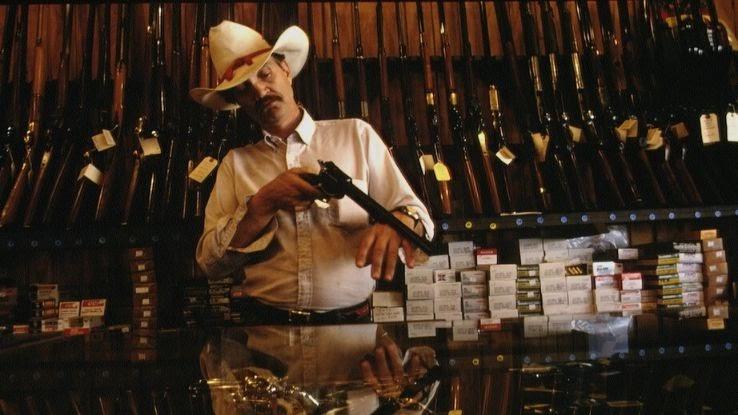
In fact, it’s possible that Earp never did carry the Colt Buntline Special. The first mention of him having done so appeared in the book “Wyatt Earp: Frontier Marshal” by Stuart Lake, with the story dictated by Earp himself.
Murder Charges
Following the gunfight at the O.K. Corral, the Earp brothers and Doc Holliday were charged with murder. Ike Clanton, who had run away from the fight, provided eyewitness testimony against them. His testimony wasn’t viewed as credible, however, seeing as Clanton was fleeing for his life at the time.
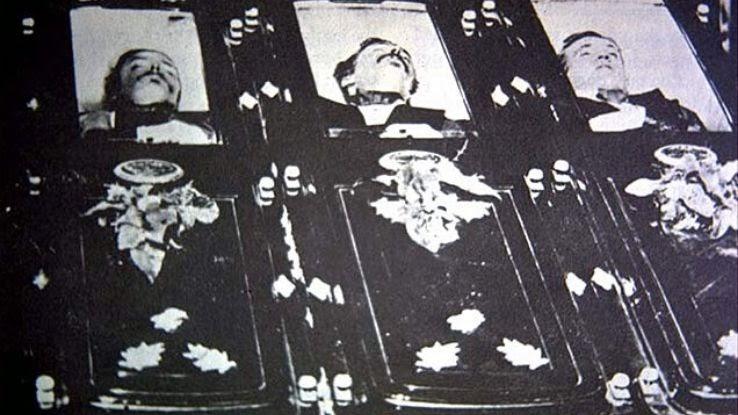
Following hearings that lasted over a month, the judge refused to indict the Earps on account of a lack of evidence. Most of the cowboy side stated that either Wyatt Earp or Doc Holliday fired the first shot that kick-started the gunfight.
Cowboys Striking Back
The cowboys struck back in 1881, ambushing Virgil Earp in Tombstone. Virgil was shot in the back with a shotgun. He survived but was left disabled. Ike Clanton, who had testified against the Earps at the O.K. Corral hearings, was charged with the attack. He was later acquitted, however. Wyatt Earp sent him a request to meet, but Clanton refused the request.
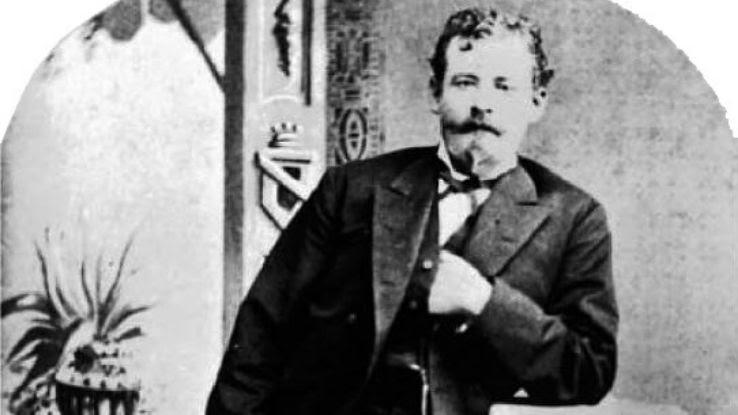
Earp spent the winter months of 1882 raising money to hire a team of deputies to go after the cowboys. That March, assassins shot Earp’s brother Morgan while he was playing billiards.
The Earp Vendetta Rides
Earp put together a posse to go after the cowboys. It included Doc Holliday, his brothers Warren and James and several others he hired in exchange for payment of $5 a day. The group set out on March 20. During this time, Earp claimed to have settled scores and eliminated murderers and thieves, but there’s little record of this beyond half a dozen or so men.
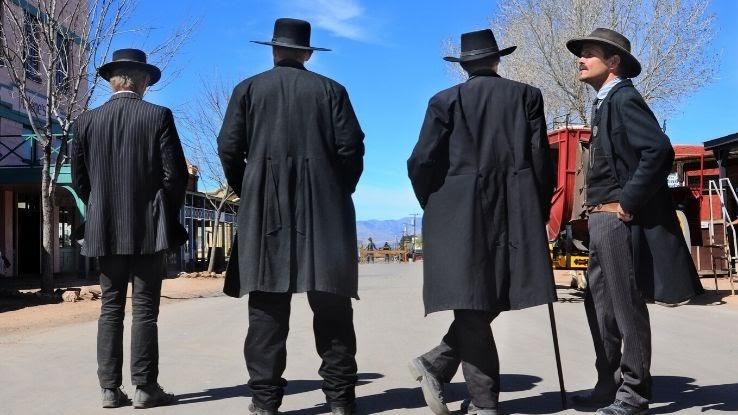
In response to Earp’s posse, Sheriff Behan also formed a group of men. Their aim was to arrest Earp and his group. Earp’s posse then escaped to New Mexico.
New Mexico and Back West
While in New Mexico, Earp reconnected with his old friend Bat Masterson. He then began running Faro games in a saloon Masterson owned. Earp also visited his friend Doc Holliday in Colorado in 1886. At the time, Doc Holliday was on his deathbed battling tuberculosis.
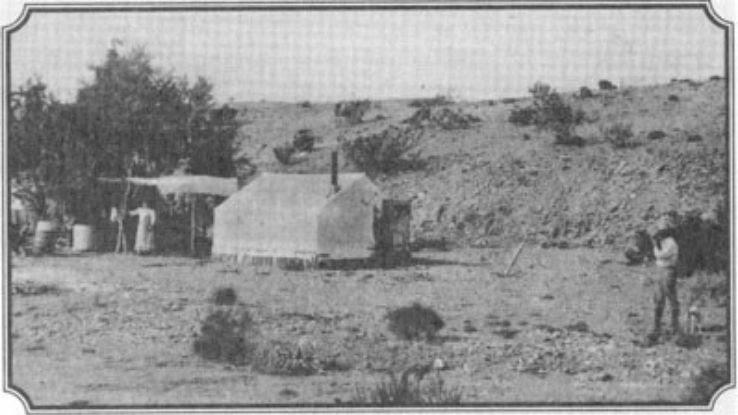
Earp continued on his journey west. He temporarily settled in towns and chased the dream of mining a fortune in copper or silver. Earp’s brothers James and Warren joined him often during this time, and he continued to work as a lawman occasionally.
Life in California With Josephine
In 1887 Wyatt Earp arrived in San Diego, California, with his common-law wife Josephine. The move offered him an opportunity to cash in on the booming real estate market in the area. He put his money into real estate, brothels, saloons and gambling halls.
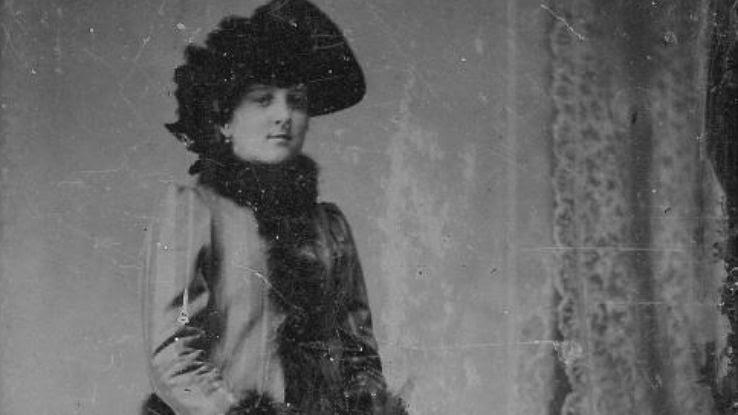
While in California, Earp got back into refereeing boxing fights and also started investing in racehorses. San Diego’s real estate market collapsed at the end of the 1880s, however, and the town’s population waned. Earp again decided to move, and he and Josephine set out for San Francisco.
Collapsing Real Estate Empire
Earp’s real estate empire was collapsing due to the market in San Diego taking a downturn. While in San Francisco, he began managing a stable. He trained and ran racehorses but was no longer able to afford his own.
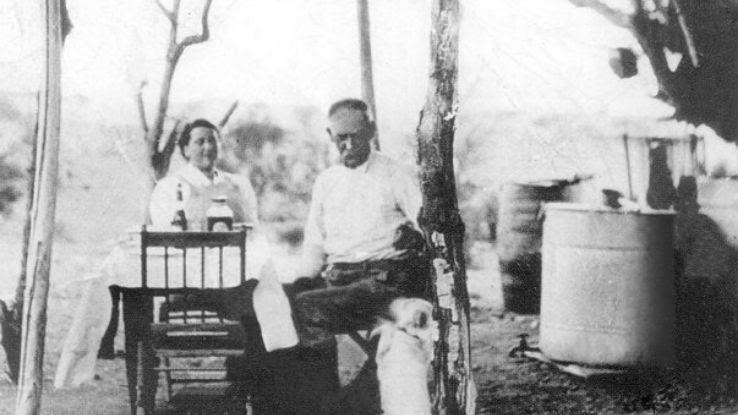
During this period, Earp and Josephine lived at four different addresses. Earp is said to have engaged in his usual philandering ways at the time. Josephine was also said to have been a bit of a gambler, and not a particularly profitable one at that. The couple’s relationship was strained.
Fight Fixing
Bob Fitzsimmons and Tom Sharkey fought for the world heavyweight championship of boxing (an unofficial title) in December of 1896. Wyatt Earp served as the referee for the fight. The recent fights he had officiated had used a more lenient set of rules than this particular match did.
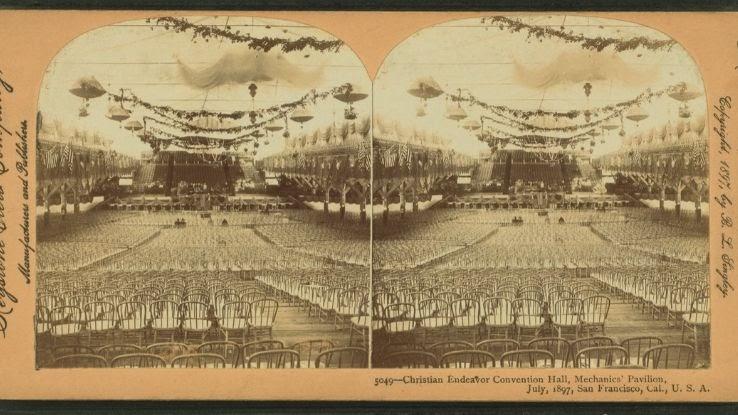
Earp disqualified Fitzsimmons for a low blow during the contest and declared Sharkey the winner and champion. Accusations of fight fixing were made following the controversial decision. The media attention the fight received drummed up renewed interest in Earp among the public.
Defense Against Outlaw Accusations
The decision from the Sharkey vs. Fitzsimmons fight thrust Wyatt Earp’s name back into the media spotlight. Fewer than 10 years after the fight, the doctor assigned to the bout admitted to having been paid $1,000 as part of a fight-fixing conspiracy. The doctor said he was paid to treat Sharkey as if the fighter had been dealt a low blow.
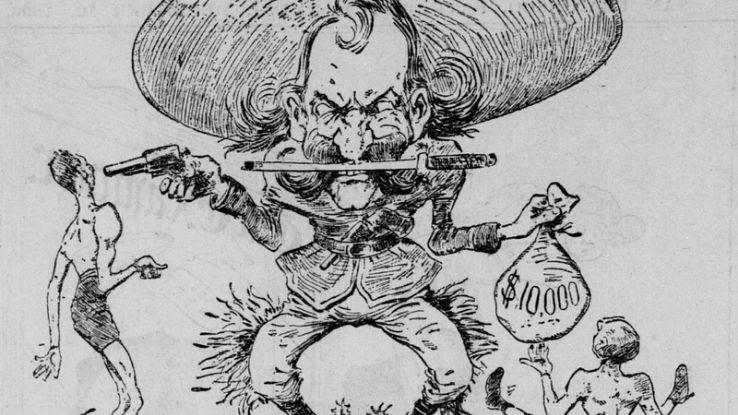
During this period, Earp and his brother were accused of robbing stagecoaches, evading taxes and committing other crimes. Earp began to issue stories of his own about himself to counter the accusations that he was an outlaw.
Alaska Commercial Company and the Yukon Gold Rush
Following the fight-fixing scandal, Wyatt Earp fled with Josephine to Alaska to escape the public’s condemnation. He started work with the Alaska Commercial Company, selling items such as beer and cigars to miners and prospectors who arrived in the region looking to strike gold.
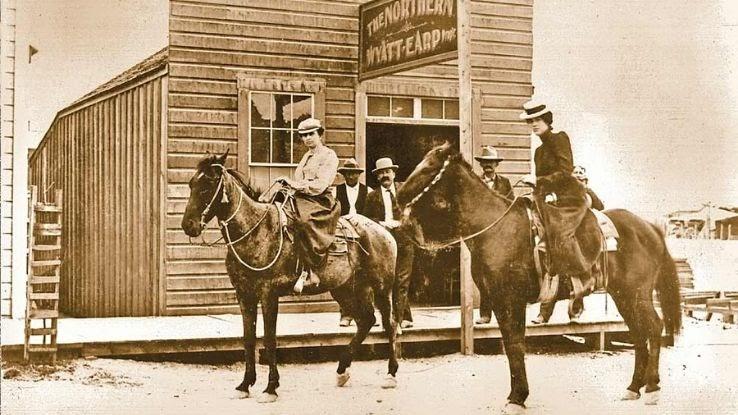
The year after arriving in Alaska, Earp opened a two-story saloon and brothel in the town of Nome. He was arrested several times while in the region. Earp eventually decided to move yet again, this time traveling to Seattle where the local papers noted his arrival.
Businesses Seized in Seattle
When Earp arrived in Seattle, his reputation was debated in the city’s newspapers. Local opinions varied, stating Earp was either a tough lawman or an outlaw himself. His attempts to open a saloon and gambling house in the city were met with resistance, although he did have a fair share of supporters.
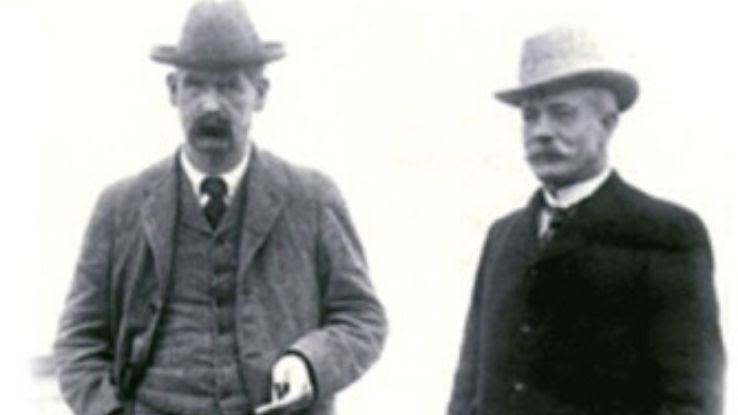
Earp’s businesses soon drew more attention for the large and rowdy crowds they attracted. After much prodding from the media and local citizen groups, the state stepped in and closed up Earp’s gambling house, brothel and saloon. Earp was once again forced to move.
Working With the LAPD
When Wyatt Earp was 62, he began working for the Los Angeles Police Department. The organization hired him in 1910 to do work that was considered “outside the law.” Earp was the man the LAPD turned to in order to do such things as catch criminals who were wanted in California but had escaped across the border to Mexico. Earp was tasked with returning these criminals to California.
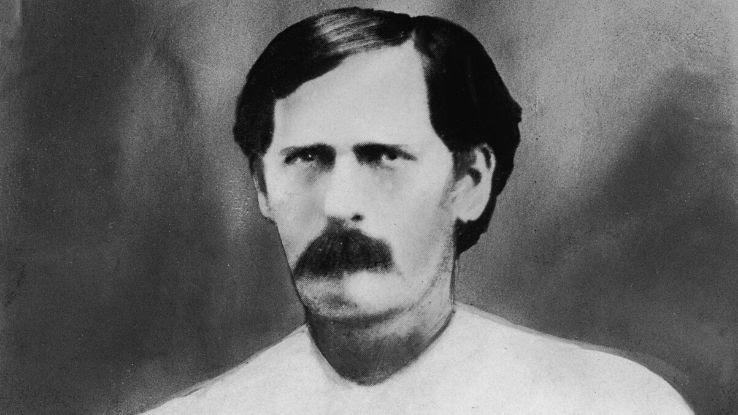
While in Los Angeles, Earp began providing advice to those in the film industry in regards to Western films. He coached famed actor and director Charlie Chaplin.
Controlling His Own Legacy
Throughout his lifetime, Wyatt Earp read stories of his own deeds in newspapers, novels and pulp magazines. Earp didn’t shy away from adding to his own legacy with exaggerated or possibly completely made up stories, however.
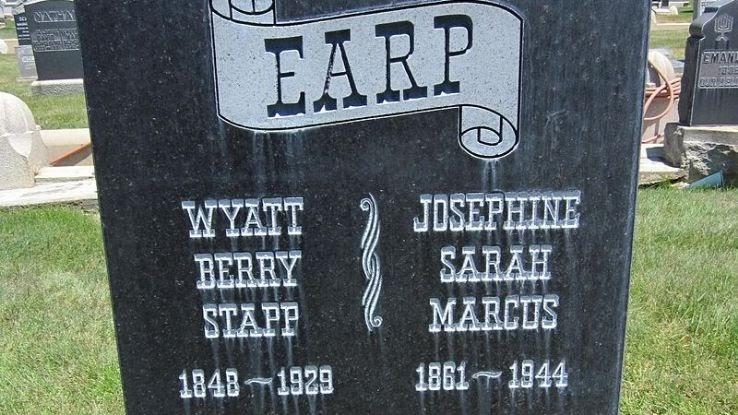
The truth about Earp is more complicated than fiction. He broke the law when it suited him. He contributed to fight-fixing in boxing. His life was spent running away from problems he’d caused. Despite this, however, Earp is and will likely always remain a treasured symbol of the American West and a legend of the late 19th century.





